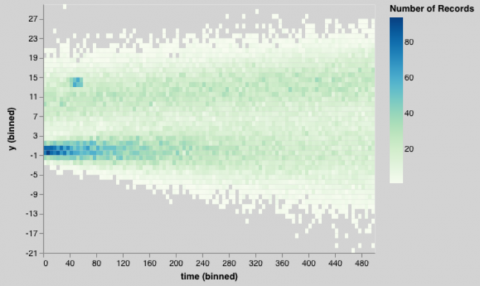Operations | Monitoring | ITSM | DevOps | Cloud
%term
(2018) What is scrum? The Agile Coach - Ep. 1
(2018) How scrum works - The Agile Coach - Ep. 2
(2018) Scrum roles explained - The Agile Coach - Ep. 3
(2018) Scrum artifacts - The Agile Coach - Ep. 4
Heatmaps Make Ops Better
In this blog miniseries, I’d like to talk about how to think about doing data analysis “the Honeycomb way.” Welcome to part 1, where I cover what a heatmap is—and how using them can really level up your ability to understand what’s going on with distributed software. Heatmaps are a vital tool for software owners: if you’re going to look at a lot of data, then you need to be able to summarize it without losing detail.
Accelerate Your Career: Become an Agent of Transformation
A new global research report launched today by AppDynamics reveals the emergence of a new breed of technologist, primed to drive positive and sustainable change within their organizations over the coming years – The Agents of Transformation. Technology advancements continue to change the world in ways we’re only beginning to imagine – transforming the way we work, rest, and play.
5 Best Practices for Resolving Errors Quickly
I love writing software, but I hate dealing with bugs. They take you away from what you want to be doing and often lead you into a rabbit hole. At Sentry—an open-source error tracking platform that provides complete app logic, deep context, and visibility across the entire stack in real time—we have a few tips that we’ve honed over time to make error resolution painless (ok, less painful), including an official integration with PagerDuty.
Our Take on The New Stack's Guide to Serverless Technologies
We have read with great interest the recently released The New Stack ebook entitled: Guide to Serverless Technologies. It is a great report with great insights! We encourage you to read it as well (it's free!). We have recently closed our own survey and are tabulating the results and have seen many similarities and some differences in the responses. Weighing in on the findings of the New Stack survey in advance of releasing our report, we wanted to comment on three key themes from this eBook…
Level Up With Derived Columns: Wibbly-Wobbly Timey-Wimey Manipulation
When we released derived columns last year, we already knew they were a powerful way to manipulate and explore data in Honeycomb, but we didn’t realize just how many different ways folks could use them. We use them all the time to improve our perspective when looking at data as we use Honeycomb internally, so we decided to share. So, in this series, Honeycombers share their favorite derived column use cases and explain how to achieve them.











